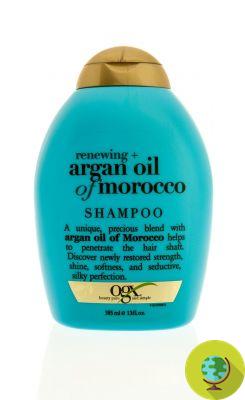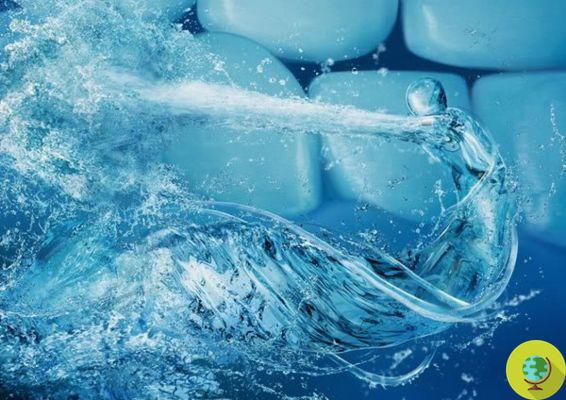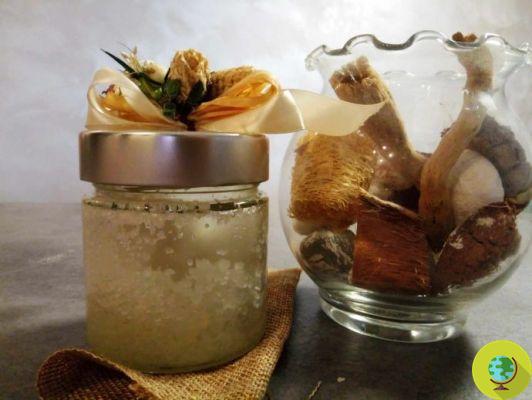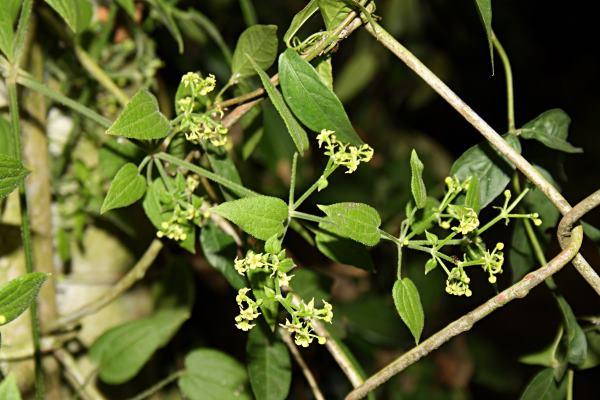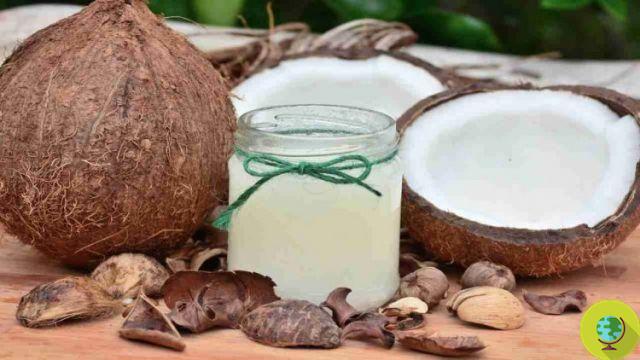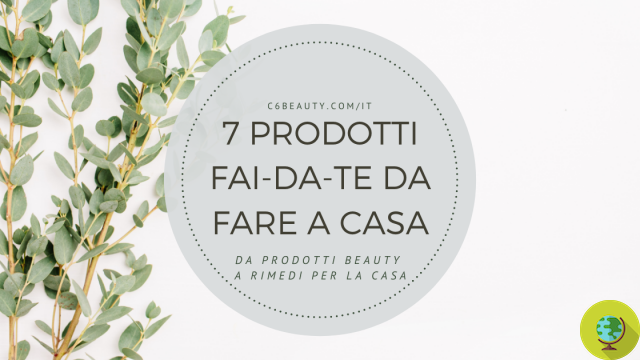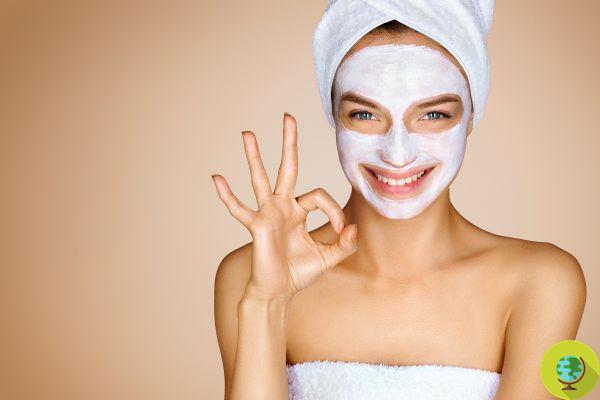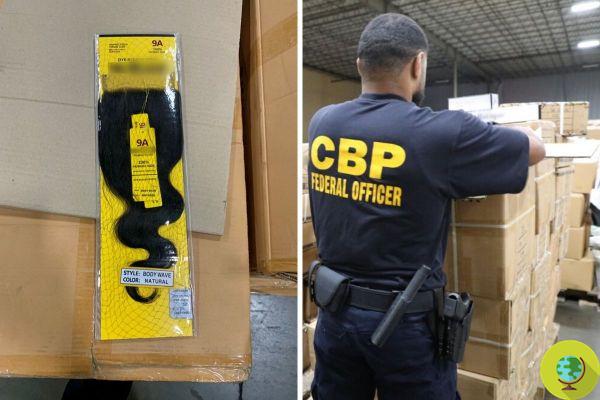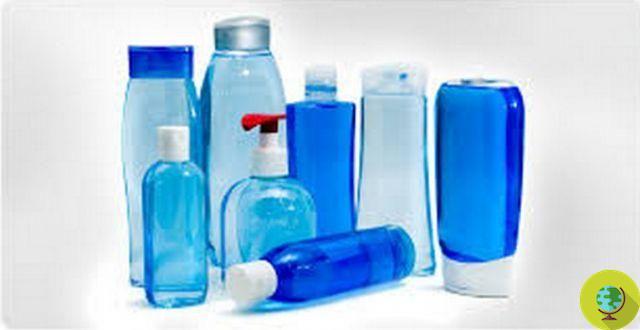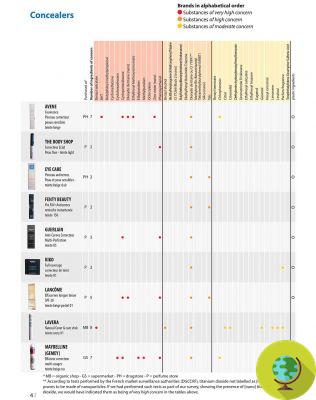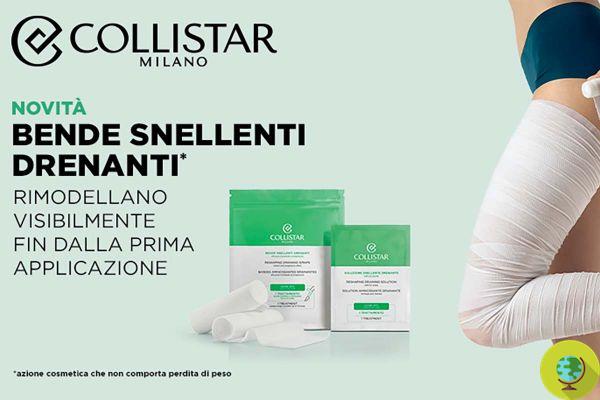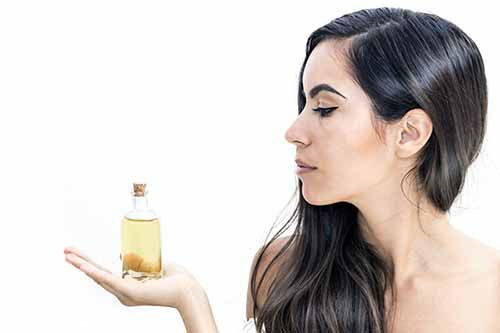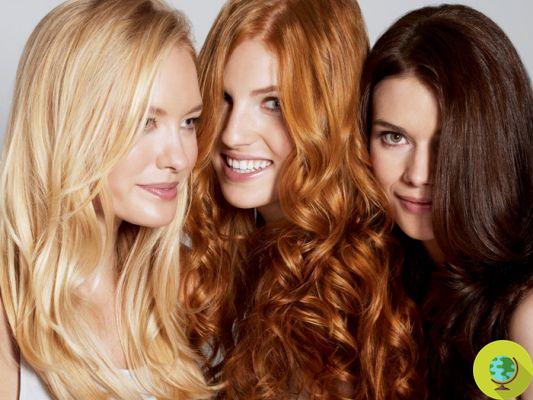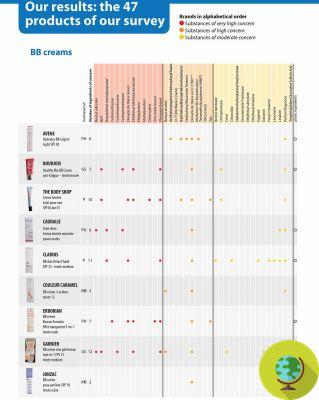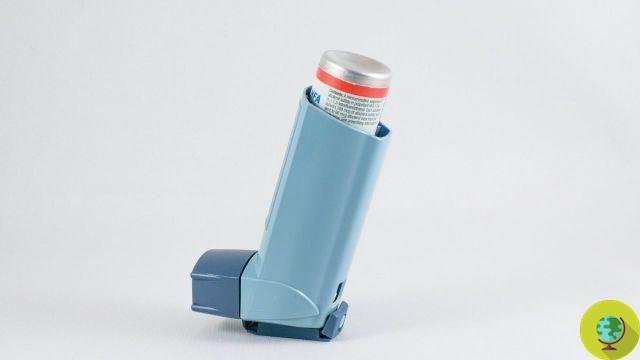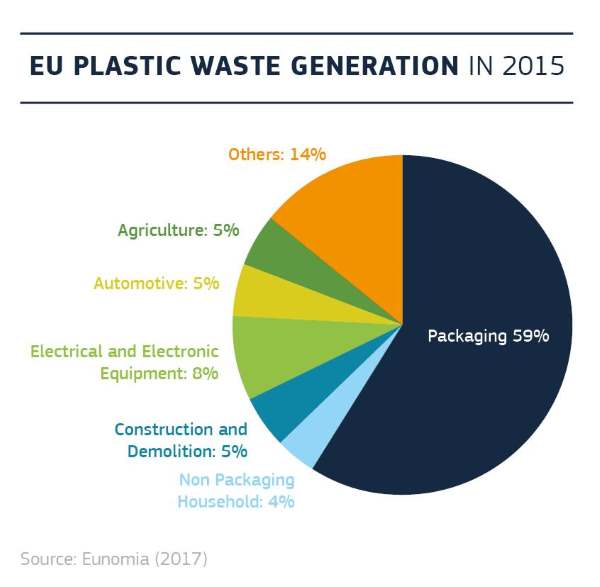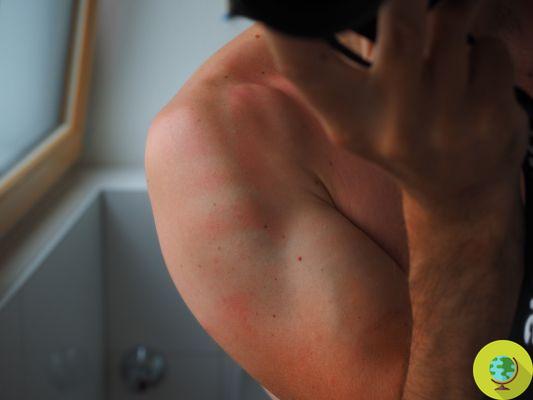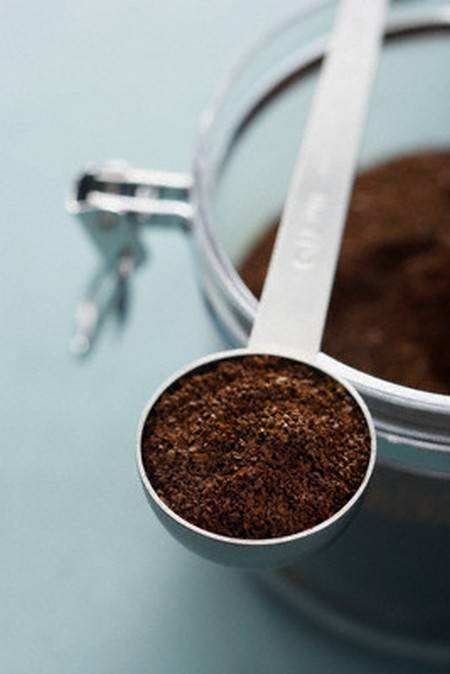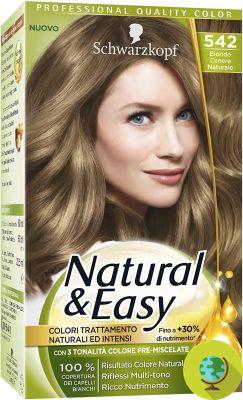Altroconsumo has analyzed 14 lipsticks of well-known brands to understand if they are really safe for the health of consumers. The results are not comforting
Don't store avocado like this: it's dangerousAltroconsumo has analyzed a series of lipsticks of well-known brands to understand if they were really safe for the health of consumers. The results showed that one in three lipsticks can be harmful.
A new survey by Altroconsumo focused on analyzing a product that some women use daily (2 out of 10) but that many others choose for important occasions. Let's talk about lipstick, one of the most loved and purchased cosmetics.
Since it is used on the lips, it is applied several times a day and it may happen that small traces are ingested, it is very important that this product contains ingredients that are safe for the health of consumers.
To understand if this is the case, Altroconsumo, in collaboration with other European consumer organizations, has analyzed 14 lipsticks of the main brands on the market.
These are the brands that ended up in the laboratory:
- April
- Boho green
- Bourjois
- Chanel
- Dior
- Dr. Hauschka
- Kiko
- L'Oreal
- Mac
- Nyx
- Purobio
- Health
- So’ bio etic
- Too Faced
The laboratory technicians went in search of heavy metals, such as lead, cadmium, arsenic and mercury, whose presence is permitted by law only in trace amounts (but there is no maximum limit set) but also of mineral oils resulting from petroleum refining.
Index
The results
The results showed that 5 out of 14 lipsticks contain ingredients that are potentially harmful to health, this is almost one lipstick out of 3 of the samples analyzed.
What was found? All lipsticks comply with the maximum limits for heavy metals set by the German Government Agency for Consumer Protection and Food Safety (BVL), but the same cannot be said for the presence of mineral oils.
These have been found in most lipsticks, regularly labeled as paraffinum liquidum, paraffin, microcrystalline wax, petrolatum, etc. The problem is that these substances, regulated in their use by EC Reg. 1223/2009, must be properly treated to avoid the presence of dangerous and potentially carcinogenic residues.
But obviously this has not been done in all lipsticks, as these residues have been found by the test in some products. Therefore that a lipstick has mineral oils in it is not in itself a risk (the two products at the top of the ranking also contain them), the problem is the presence of dangerous residues which testify that the mineral oils have not been properly purified.
When we talk about dangerous residues we are referring in particular to Mosh (saturated hydrocarbons of mineral oils) e Moah (aromatic hydrocarbons of mineral oils).
The health risks of these substances, particularly if ingested, are known, the former can accumulate in the tissues of the spleen, liver and lymph nodes, while the latter are considered carcinogenic.
Altroconsumo specifies that if there are Moahs, no lipstick can be considered safe, regardless of the quantity in which they are present. For Moshs, however, quantitative limits have been established in collaboration with some European consumer associations and on the basis of current scientific literature.
The worst and the best lipsticks
Lipsticks from single-brand stores were particularly targeted for the presence of these substances Kiko, Mac, Nyx e Too Faced (sold by Sephora). Among them too April, brand of ecological cosmetics, whose lipstick, although it does not contain mineral oils, it was equally positive for Moah. These are therefore the worst lipsticks according to the test while the best, despite containing mineral oils (but without residues), they are lipsticks Chanel, Dior and Dr Hauschka.
In the following infographic you can see the ranking of the analyzed lipsticks, all the specifications and the overall final judgment.
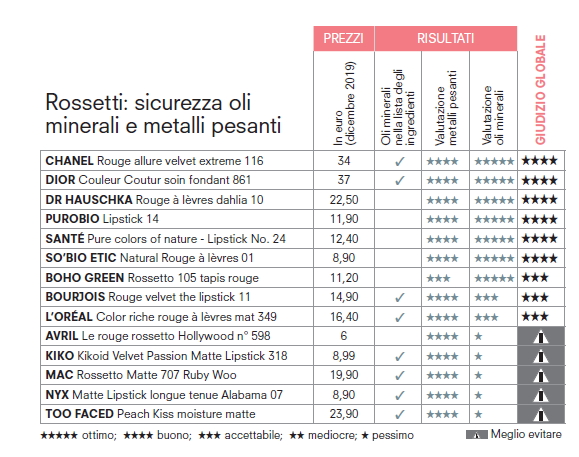
Source Table © Altroconsumo
How to choose a lipstick
Based on what has been identified in the analyzes, Altroconsumo suggests reading the Inci of cosmetics carefully before buying them. In the case of lipsticks, the magazine recommends avoiding those in which one or more of the following ingredients are present (which could contain residues that are dangerous to health if swallowed):
- Microcrystalline or Microcrystalline Wax
- Ceresin
- Hydrogenated Microcrystalline Wax
- Hydrogenated Polyisobutene
- Ozokerite, Paraffin
- Liquid paraffin
- Petrolatum, Polybutene
- Polyethylene
- Polyisobutenes
- Synthetic Wax
Source: Altroconsumo press release
On lipsticks you might also be interested in:
- Do you know what's inside your lipstick? In the USA you find traces of lead
- Paraffin lip gloss: all the BRANDS passed and rejected by Oko Test
- Squalene in cosmetics: lipsticks, foundations and shark oil sunscreens
- Komachi Beni, from the Japanese tradition the natural lipstick of geishas
- Cosmetics: do you know how many bacteria are hidden in your make-up? 90% of lipsticks, eye shadows and sponges contaminated
- The bio-ecological lipsticks, for environmentally proof edible kisses




